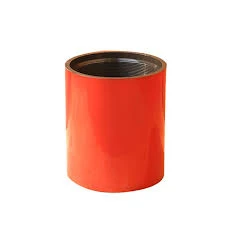- Afrikaans
- Albanian
- Amharic
- Arabic
- Armenian
- Azerbaijani
- Basque
- Belarusian
- Bengali
- Bosnian
- Bulgarian
- Catalan
- Cebuano
- Corsican
- Croatian
- Czech
- Danish
- Dutch
- English
- Esperanto
- Estonian
- Finnish
- French
- Frisian
- Galician
- Georgian
- German
- Greek
- Gujarati
- Haitian Creole
- hausa
- hawaiian
- Hebrew
- Hindi
- Miao
- Hungarian
- Icelandic
- igbo
- Indonesian
- irish
- Italian
- Japanese
- Javanese
- Kannada
- kazakh
- Khmer
- Rwandese
- Korean
- Kurdish
- Kyrgyz
- Lao
- Latin
- Latvian
- Lithuanian
- Luxembourgish
- Macedonian
- Malgashi
- Malay
- Malayalam
- Maltese
- Maori
- Marathi
- Mongolian
- Myanmar
- Nepali
- Norwegian
- Norwegian
- Occitan
- Pashto
- Persian
- Polish
- Portuguese
- Punjabi
- Romanian
- Russian
- Samoan
- Scottish Gaelic
- Serbian
- Sesotho
- Shona
- Sindhi
- Sinhala
- Slovak
- Slovenian
- Somali
- Spanish
- Sundanese
- Swahili
- Swedish
- Tagalog
- Tajik
- Tamil
- Tatar
- Telugu
- Thai
- Turkish
- Turkmen
- Ukrainian
- Urdu
- Uighur
- Uzbek
- Vietnamese
- Welsh
- Bantu
- Yiddish
- Yoruba
- Zulu
Crossing Over Tubing Systems for Enhanced Performance and Efficiency
Understanding Tubing Crossover in Oil and Gas Operations
In the oil and gas industry, the extraction of fossil fuels involves a complex array of processes, equipment, and technologies. One of the critical components in this process is the tubing crossover, which plays a significant role in facilitating efficient production and the safe transportation of hydrocarbons from the wellbore to the surface. This article aims to delve into the concept of tubing crossover, its functionalities, benefits, and considerations that operators must account for.
What is Tubing Crossover?
Tubing crossover refers to a specific type of connection or fitting in the tubing system of an oil or gas well. It enables the transition between different sizes or types of tubing or connects various sections within the wellbore. Tubing crossovers are commonly used in scenarios where different operational requirements, specifications, or fluid types necessitate such adaptations.
Typically, a crossover fitting may be employed to connect a larger-diameter tubing with a smaller-diameter line. This process is essential during well intervention or when modifying completion systems, allowing operators to switch between production or injection tubing seamlessly. Essentially, the crossover acts as a strategic junction within the tubing system, enabling operators to optimize flow rates and adapt to changing conditions effectively.
Benefits of Tubing Crossover
1. Flexibility in Operations Tubing crossovers provide operators with the flexibility to adapt their equipment as needed by allowing various tubing combinations. This adaptability can be crucial during different phases of production, such as initial drilling, completion, and production enhancement.
2. Enhanced Flow Management By allowing for controlled transitions between tubing sizes, crossovers can significantly improve flow management. This precision ensures that pressure and fluid dynamics are optimized, which can enhance overall production efficiency.
3. Cost-Effectiveness Implementing tubing crossovers can lead to cost savings for operators. Rather than replacing the entire tubing string to accommodate different operational needs, operators can utilize crossovers to achieve the desired functionality without incurring excessive expenses.
tubing crossover

4. Simplified Repairs and Maintenance Tubing crossover connections can make it simpler to perform repairs and maintenance on specific sections of tubing. This localized approach can minimize downtime, helping to maintain production schedules and reduce overall operational costs.
Key Considerations
While tubing crossovers offer several benefits, operators must also consider specific factors when integrating them into their systems
1. Material Compatibility Different fluids can have varying effects on materials used in tubing crossovers. Operators must ensure that the materials used in the crossover fitting are compatible with the fluids being transported to avoid corrosion or degradation.
2. Pressure Ratings Each component in the tubing system, including crossovers, has specific pressure ratings. Operators must assess these ratings to ensure that they can safely handle the pressures expected in the well.
3. Installation and Maintenance Proper installation is crucial for the effective functioning of tubing crossovers. Operators should ensure that qualified personnel conduct the installations to mitigate the risks of leaks or failures. Regular inspections and maintenance schedules should also be implemented to detect wear and tear early.
4. Regulatory Compliance The oil and gas sector is governed by a myriad of regulations. Operators must ensure that the tubing crossover systems they utilize comply with local, national, and international standards to avoid legal complications and ensure environmental protection.
Conclusion
In conclusion, tubing crossover is a vital aspect of oil and gas operations, significantly impacting the efficiency and safety of hydrocarbon production. By enabling flexible transitions between different tubing sections, crossovers enhance flow management, provide cost savings, and streamline maintenance processes. However, careful consideration of material compatibility, pressure ratings, installation, and compliance with regulations is essential for the successful implementation of tubing crossovers. As the industry evolves and technologies advance, the role of tubing crossovers will continue to be significant in the quest for optimal production and resource management. Operators who recognize and leverage the advantages of this component will be better positioned to navigate the complexities of oil and gas extraction.
-
Tubing Pup Joints: Essential Components for Oil and Gas OperationsNewsJul.10,2025
-
Pup Joints: Essential Components for Reliable Drilling OperationsNewsJul.10,2025
-
Pipe Couplings: Connecting Your World EfficientlyNewsJul.10,2025
-
Mastering Oilfield Operations with Quality Tubing and CasingNewsJul.10,2025
-
High-Quality Casing Couplings for Every NeedNewsJul.10,2025
-
Boost Your Drilling Efficiency with Premium Crossover Tools & Seating NipplesNewsJul.10,2025







